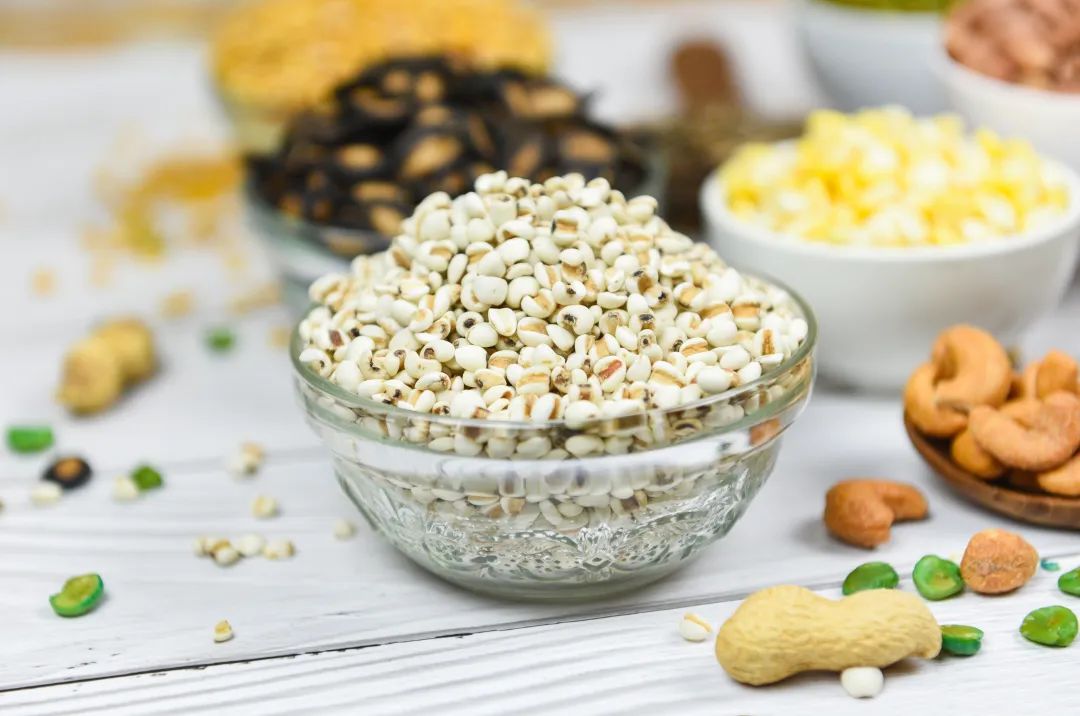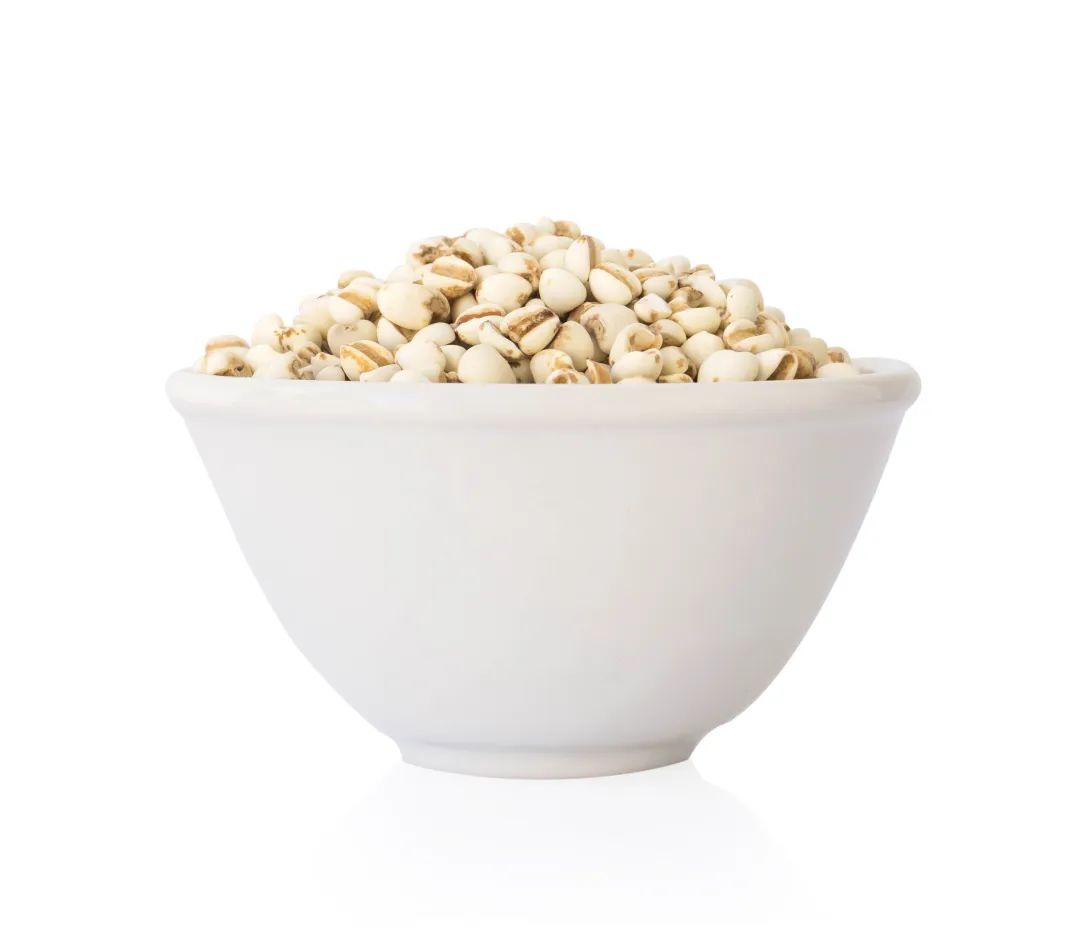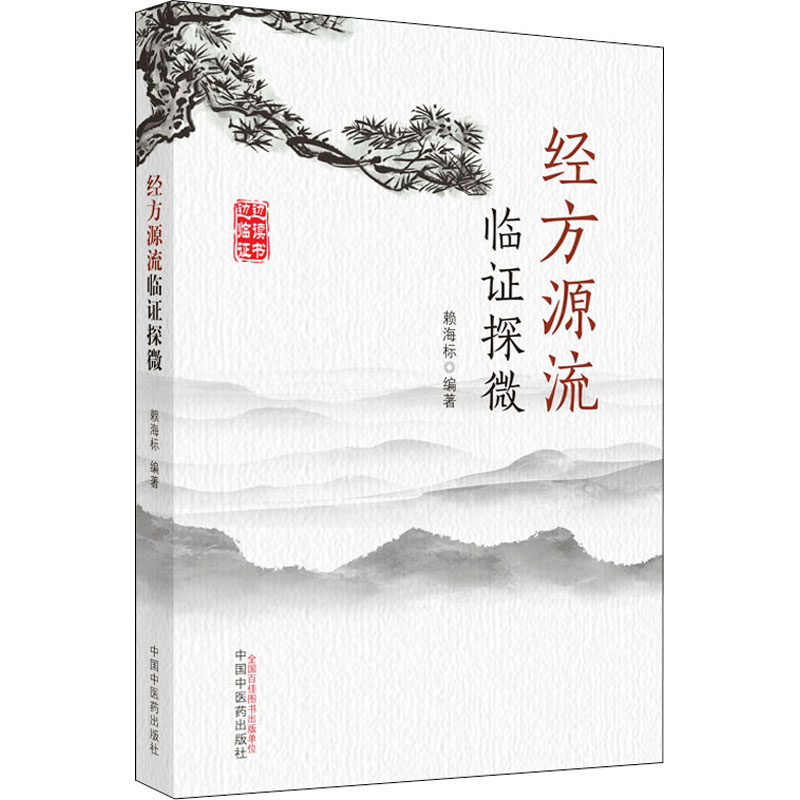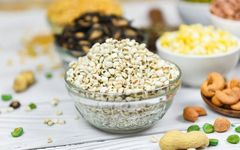Editor’s Note
Coix seed (Yi Yi Ren) is a commonly used traditional Chinese medicine (TCM) and is also a food-medicine dual-purpose ingredient. It can strengthen the spleen and drain dampness, relieve pain and diarrhea, clear heat and expel pus, and promote urination without harming the body’s vital energy. It supplements spleen qi without being greasy, and its effects are remarkable, earning it the nickname “Pearl of Coix Seed.” However, the effects of raw and cooked coix seed differ; raw coix seed is more focused on promoting urination and draining dampness, while roasted coix seed is more inclined to warm and strengthen the spleen. Let’s explore further.
Misunderstandings about Traditional Chinese MedicineCoix Seed and Its Defamation
Coix seed, also known as Yi Yi Ren, Yi Mi, Yi Ren, and other names, is a commonly used TCM herb. It has a sweet and bland flavor, is slightly cold in nature, and has effects such as promoting urination and reducing swelling, strengthening the spleen and dispelling dampness, relaxing the muscles and relieving pain, clearing heat and expelling pus. It is primarily used to treat conditions such as rheumatic pain, damp-heat foot disease, muscle spasms, and edema.
In the late Qing and early Republic periods, the famous TCM master Zhang Xichun recorded in his work “Medical Records of the East and West” a recipe called “Pearl and Jade Porridge,” which consists of raw yam, raw coix seed, and persimmon frost cake. This formula is used to treat deficiencies in the spleen and lung yin, poor appetite, and symptoms of yin deficiency. The method involves grinding the two herbs into a coarse paste, cooking them until soft, and then adding the crushed persimmon frost cake to dissolve and consume as desired. The “jade” refers to yam, which is also known as Yu Yan, while the “pearl” refers to coix seed.

The “Book of the Later Han” records a case of injustice involving General Ma Yuan, who made significant contributions to Emperor Liu Xiu of the Han Dynasty. Initially, Ma Yuan was ordered to quell a rebellion in the southern border (present-day Guangxi) and often consumed coix seed, as it could dispel miasma and promote health. The southern coix seeds are large, and Ma Yuan intended to take them back as seeds. Coix seeds resemble pearls, and people at the time believed they were rare treasures from the south. Some powerful officials in the court suspected that Ma Yuan was transporting stolen pearls and treasures. However, due to Ma Yuan’s favor with Emperor Liu Xiu, they did not dare to act against him. After Ma Yuan’s death, the military supervisor Liang Song, envious of his talents, falsely accused him of plundering treasures from the south. Emperor Liu Xiu believed these false accusations and was furious, ordering the retrieval of Ma Yuan’s “New Xi Marquis Seal.” Ma Yuan’s wife and son dared not report his death and secretly buried him outside the city, afraid to return him to his ancestral grave. Even guests and old friends did not dare to come to mourn. Ma Yuan’s nephew and wife connected with the court to plead for justice. After presenting Liang Song’s false accusation, they realized it was a case of slander and submitted a petition to clear Ma Yuan’s name, which took six attempts before he was finally buried properly. The late Ming dynasty writer Zhu Yizun wrote, “The wutong tree’s night rain is heartbreaking, the pearl of coix seed is wronged by chance,” referring to this story. Henceforth, “Pearl of Coix Seed” became a metaphor for being slandered and wronged, deliberately reversing right and wrong.
In TCM, individuals with excessive dampness often experience symptoms such as heaviness in the head and body, diarrhea, sticky stools, and swelling in the limbs. The humid and hot climate in Guangdong leads to many people with varying degrees of dampness, which is why they often add coix seed when making soup to achieve the effect of strengthening the spleen and dispelling dampness.
Raw and Cooked Coix Seed Have Very Different EffectsRaw Coix Seed is Sweet and Slightly Cold, with the Most Significant Effects of Promoting Urination and Draining Dampness
Raw coix seed is sweet, slightly cold, and has the most significant effects of promoting urination and draining dampness. It can dispel dampness and wind, clear heat and expel pus, and relieve pain, showing remarkable effects for urinary difficulties, edema, foot disease, and rheumatic pain.
Roasted Coix Seed is Prepared by Stir-Frying Coix Seed Until Golden Brown, with a Slightly Toasted Aroma. The So-Called “Toasted Aroma Enters the Spleen” Means that Roasted Coix Seed, Compared to Raw Coix Seed, Loses Some of Its Cold Properties and Gains a Warming and Astringent Quality, making its effects of warming and strengthening the spleen more pronounced.
Fried Coix Seed with Bran is Made by Stir-Frying Coix Seed with Bran, Enhancing Its Effects of Strengthening the Spleen and Astringing the Intestines, Especially Suitable for Patients with Spleen Deficiency and Dampness, Who Often Experience Loose, Sticky Stools and Edema.

How to Choose Coix SeedCoix Seed Based on Different Body Types
Pharmacological studies have shown that coix seed has certain effects on weight loss, lipid reduction, and blood sugar lowering. As for how to choose, it must be based on different body types. Dr. Huang Hanchao from the Second Affiliated Hospital of Guangdong Province suggests that for those with spleen deficiency and cold symptoms, often manifesting as fatigue, abdominal distension, poor appetite, pale tongue, and weak pulse, roasted coix seed should be chosen. If diarrhea symptoms are prominent, especially after exposure to cold or fatigue, fried coix seed with bran may be selected; conversely, for those with dampness and heat issues, often presenting with dry mouth, bitter taste, yellow greasy tongue coating, and slippery pulse, raw coix seed can be chosen. For consumption, the elderly can grind the appropriate coix seed into powder and brew it with hot water for better absorption.
Some unscrupulous merchants on the market bleach coix seed to make it look better and sell better. When purchasing, you can distinguish it by the following methods: ① Seal a small amount of coix seed in a bag and open it after a while to smell for any irritating sulfur or formaldehyde odors; ② Take a small handful of coix seed and rub it in your palm until it heats up, then bring it close to your nose to smell; if it has been treated with sulfur or formaldehyde, it will have a pungent odor.
Recommended Reading

“Exploring the Source and Clinical Application of Classical Formulas”
Click on the cover to enter the Yuyijia TCM Bookstore
This book explores the charm and essence of classical formulas from various aspects, including the cultural origins, medicinal evidence, theoretical exploration, practical application, and inheritance and development of classical formulas. It is suitable for TCM enthusiasts, classical formula enthusiasts, and clinical TCM practitioners for reference.
❖This article is for knowledge sharing only and does not constitute a recommendation or promotion of any medication or treatment. It cannot replace professional medical advice. For any medical needs, please consult and contact a legitimate medical institution.
Previous Recommendations
Four Herbs to Resolve Lung Heat Cough and Wheezing
Yan Shiyun: These few herbs have indeed worked well for insomnia over the years
“Men’s” Hidden Issues: How TCM Addresses Them
Copyright Statement
Some content of this article is selected from “Exploring the Source and Clinical Application of Classical Formulas” (published by China Traditional Chinese Medicine Press, edited by Lai Haibiao). The final interpretation rights belong to the original author. This article is recommended and published by Yue Du TCM (WeChat ID: ydzhongyi). The cover and images in the text are sourced from Shetu Network, and the copyright belongs to the original author. If there is any infringement, please contact for deletion. Unauthorized reproduction is prohibited!
✦Editor: Wang Liying Lei Chang
✦Reviewer: Liu Zhe
✦Typesetting: Yang Donglun Guo Dongshan
✦For reprints, submissions, collaborations, and bulk book purchases: 17701086692 (WeChat ID)
Click“Read the Original”, to purchase the recommended books in this article Share
Share Save
Save Click
Click View
View

